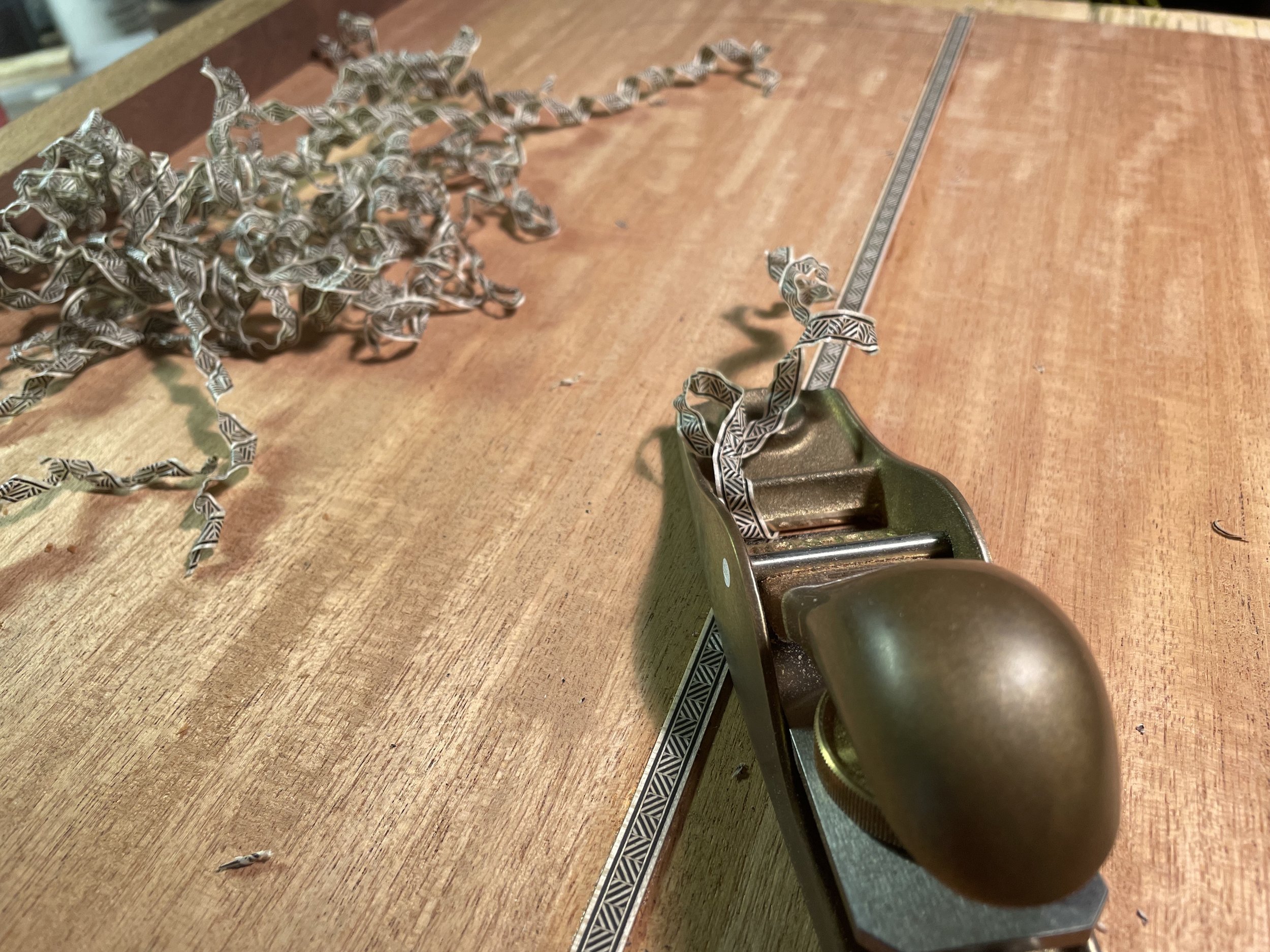
About.
My story.
My foray into luthier work initially started sometime in 2001. When faced with the imminent decline, and ultimately, the death of my dad due to late stage cancer, I was asked how I’d like to dedicate my future and honor him. I’d always had an affinity for music and woodworking (both things I shared with Dad), systems of intricacy, and the strange passion for finding catharsis in the minutiae.
So, what better way to use these facets than to learn the art form and craft of lutherie. The payout from my dad’s life insurance provided the finances to start such an endeavor.
In 2002, I started attending the European School of Lutherie, which was run by Master Luthier, Sasha Radicic. There were several schools around the country, but I chose to learn from Sasha because of the very intimate nature of his course work. He only took on 4 students at a time, and of that, only a few for the full year apprenticeship were accepted.
My method
The school I attended focused on Spanish methods of guitar construction, namely the Spanish heel, and the use of a solera to construct the guitar. Most builders don’t build this way due to the much greater amount of time required vs. using a dovetailed joint at the neck to body.
There are advantages and disadvantages to both methods. A Spanish heel when done correctly has a very robust attachment with a lot more surface area than that of a typical dovetail style. This results in a better transfer of energy by use of mass, and a greater resistance to the guitars urge to always want to fold in on itself. It makes for a very clear, and concisely balanced tone and sound. That’s the primary advantage. The disadvantage mostly lies with doing a neck reset, which the geometry can still be corrected, it’s just a bit more time consuming. It is done with a process called slipping the back. It’s a pretty clever procedure, that rarely needs to be done. With such strong geometry and engineering, there’s a lot less movement that can occur vs. a dovetail joint, given its proper execution. It’s an extraordinarily stout and stiff joint.
Consider that some original Spanish guitars are quite playable 170 years on.
All-natural French polish
I learned and use the old-world method of applying French polish as a finish. It’s understood that aside from bracing and the top wood selection, the finish is the other factor in a guitars volume and tone. French polish is very very hard and about the thinnest finish possible to put on a guitar. That is exactly what you want for the best possible tone. All told, it’s about a two month process to finish. It’s all hand rubbed and applied microns at a time, and hand buffed. It won’t look like the instrument has been dipped in a coating of plastic. French polish has the look and feel of being worked by hand. All Danner instruments get this treatment. Plus, it is 100% natural. One can apply the finish in their living room if they so desired. It has a sweet smell of candy and alcohol. Zero noxious fumes. It is quite literally made by nature through secretions of the lac bug.

If you’re looking for something that’s different than the rest, yet has the comforts of the familiar, look no further.
My bracing patterns are a Martin inspired X brace, with the exception of utilizing the double x vs the two parallel braces typically seen on Martin guitars. Each and every top is optimized by flexing, tapping, and scalloping the bracing to have the most sustain while tapping, the widest variance of tonal pitch, and are also built with a dome carved into the bracing. The result is a very lively top with sustain for days.
My experience and expertise is apparent in the care I takes in each and every one of my projects. The last 20 years were spent doing restorations, repairs, and only the occasional builds. My focus has changed primarily to being a guitar builder (amongst other stringed instruments) so expect those numbers to increase.
With every stroke of the plane, every shaving made with a chisel, every moment the instrument is born and sings for the first time, I’m honoring my father’s passion for music, and the great cost that ultimately was his life.
My instruments are a work of love and passion, and some very proven old world methodologies.
Guitars built by Jesse Danner will not disappoint.



